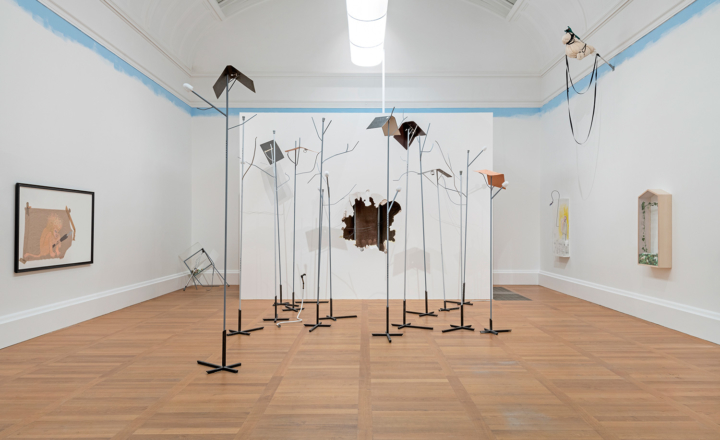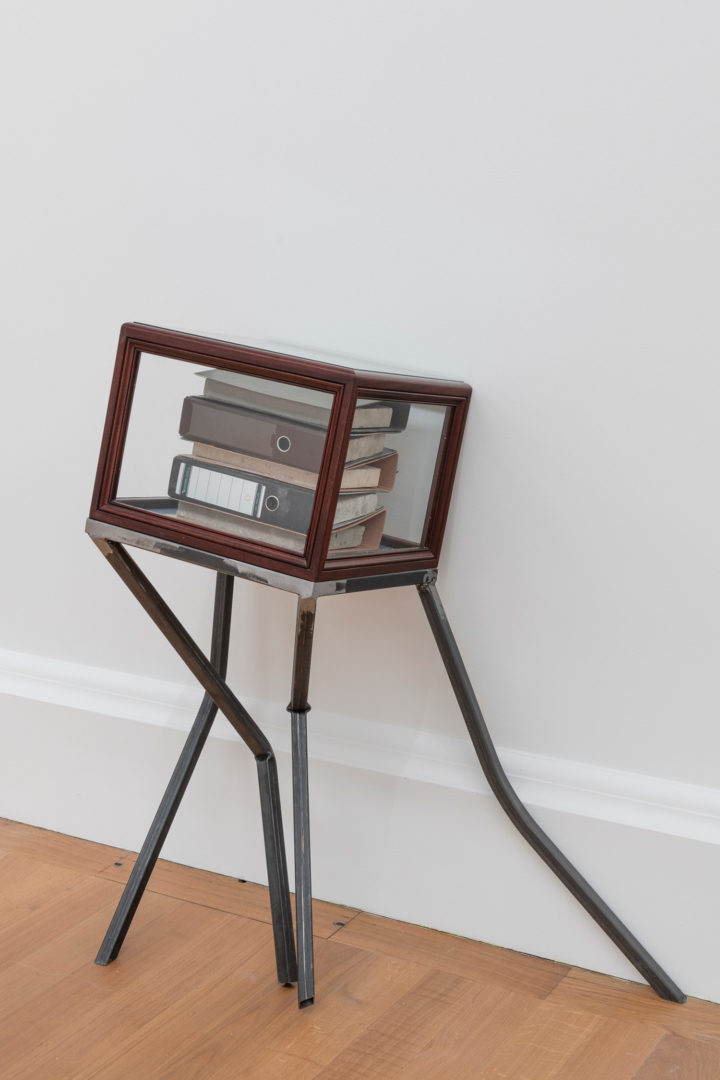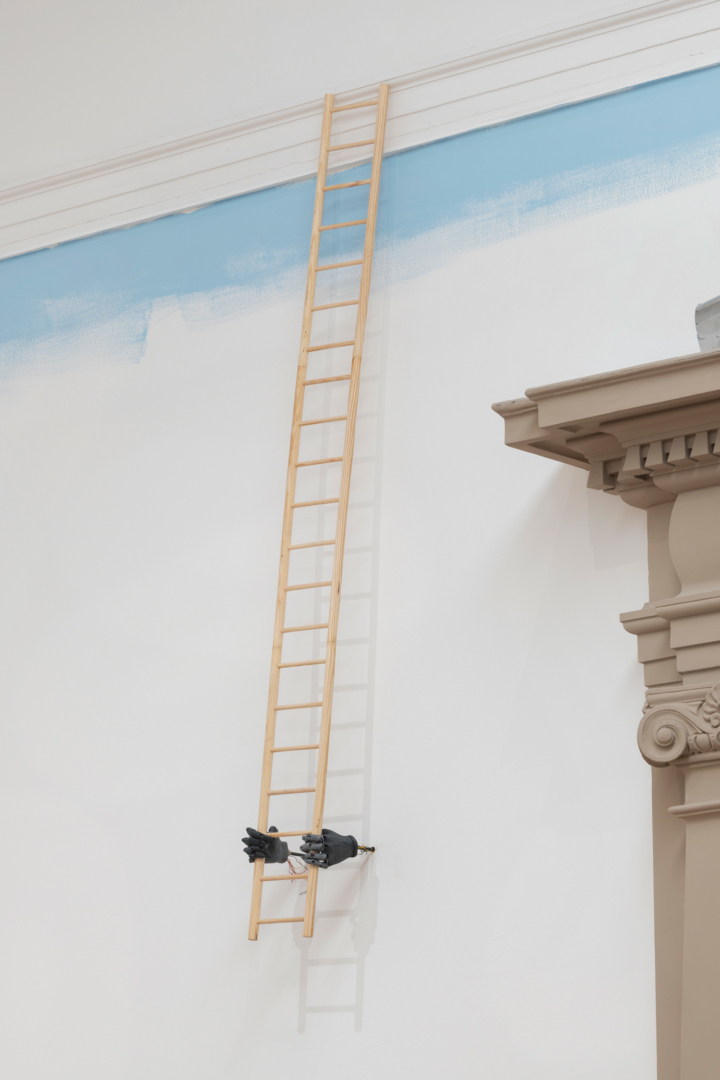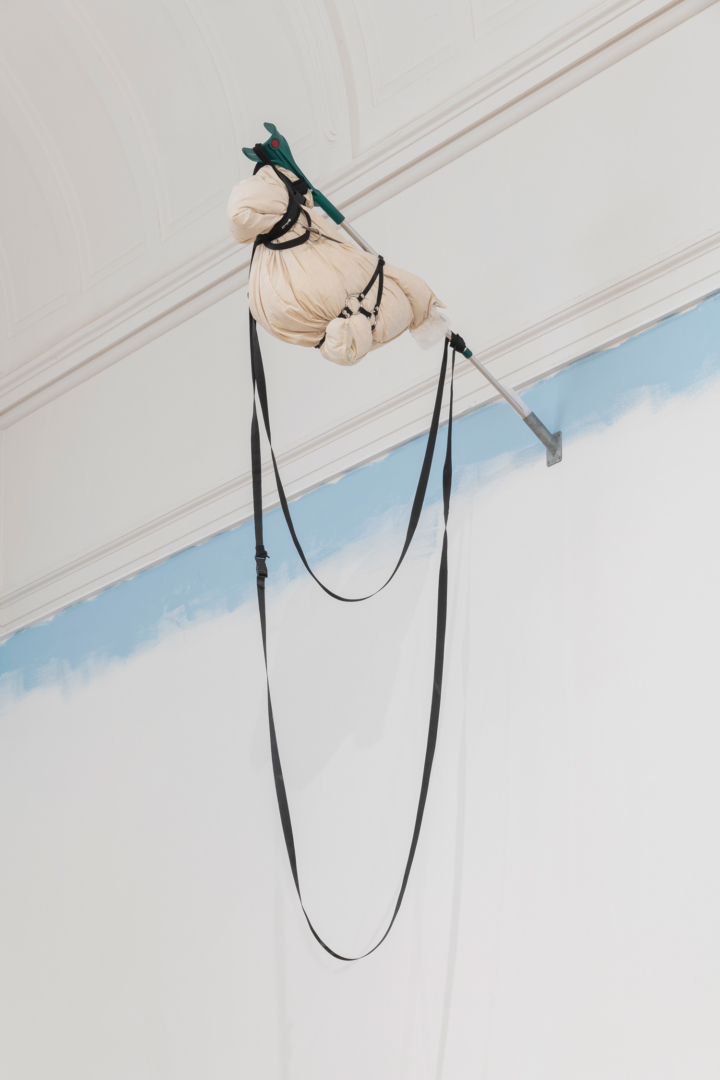Jesse Darling’s sculptures at Tate are injured. They are suffering. Bent aluminum mobility crutches buckle under their own weight; the legs of cabinets collapse; Band-Aids are stuck onto glazed surfaces. Anthropomorphic, they suggest fractured bodies struggling not only to move and carry on, but also, to be. Although they are macabre in this sense, they seem playful (little birds perch on the end of wires, severed fingers are also scribbly pens): bodies working it out as they go, trying to find some joy in the journey.
In Regalia and Insignia, a corpus is fragmented, reduced to broken bones and severed fingers arranged within bondage packs and hung from butcher’s hooks. Elsewhere, the two Sphinxes of the gate (both 2018) barely guard the entrance door. Trapped within glass vitrines, the jesmonite faces of these lions are affixed to a bare skeleton armature; one is bound with a dog gag, the other sucks from a surgical pack. Taking its cue from the exhibition’s title, “The Ballad of St Jerome”, the sculptures acknowledge the story of Saint Jerome, who when confronted with a ferocious lion acknowledged its pain, removing a thorn from its paw and gaining a lifelong comrade. These sphinxes are counter to their usual sign of strength: now vulnerable, they need help — not necessarily straightforward in a society that has disdain for weakness, or uses and abuses it to strengthen tainted power structures.
Some of the works are installed up high by the skylight windows, attempting structural escape. Icarus bears the standard (2018) comprises a feather pillow strapped around a flag bracket with strap-on and dog harnesses. The phallic protrusion of the bracket is smothered with the cushion, which bulges where the black straps have cut into its softness. Each material component is constrained. Icarus’s bold quest for freedom when flying toward the sun (though ultimately doomed) morphs into one of bound subjugation, complying with restrictive standards that have been imposed upon it — in this case by the artist, but when taken as a symbol for repressive gender roles, the rules of engagement are socially constructed and perpetuated. Sometimes we must fly and fall to really know ourselves.
Darling deconstructs identity using this mix of theology and mythology, stories becoming a methodology through which to unravel contemporary attitudes toward gender, sexuality, and selfhood. The lion and batman in the garden (temporary relief) (2018) sees these two eponymous characters drawn into aluminum foil using pencil and ink — though it is the debossed impression left by the pencil that is prominent — and framed like an altarpiece. The parenthetical title has two meanings: one suggesting the momentary analgesia of pain relief substances, the other highlighting the nature of the drawing itself, which could — if the artist wanted to — be gently smoothed out with attention not to tear the foil’s surface. After all, anything can be re-worked, re-envisaged, and understood anew with a bit of care and compassion. Considered relative to the lion, we just have to look past the surface to see bodies for what they really are: flesh that is easily wounded, though which finds new life if nurtured.






